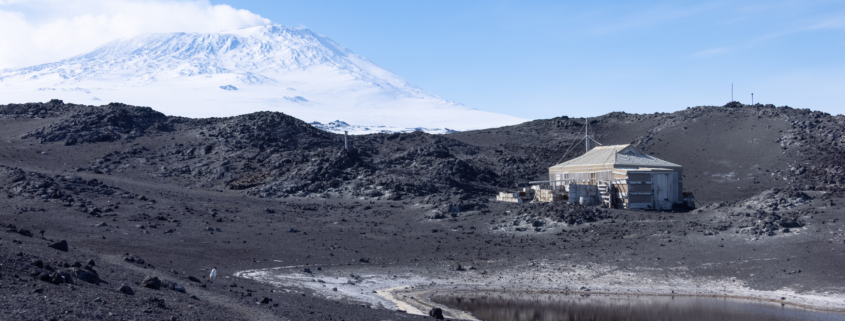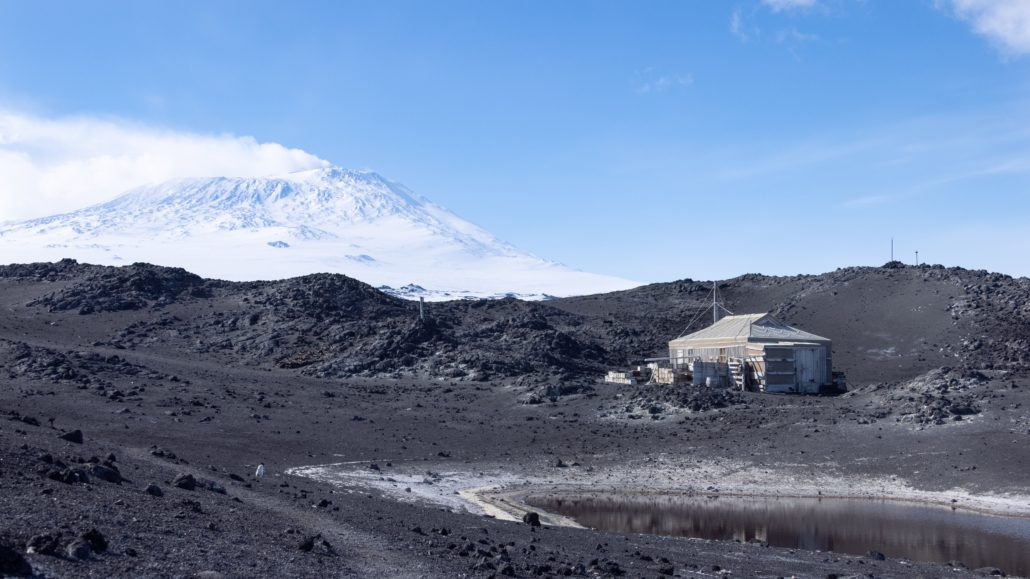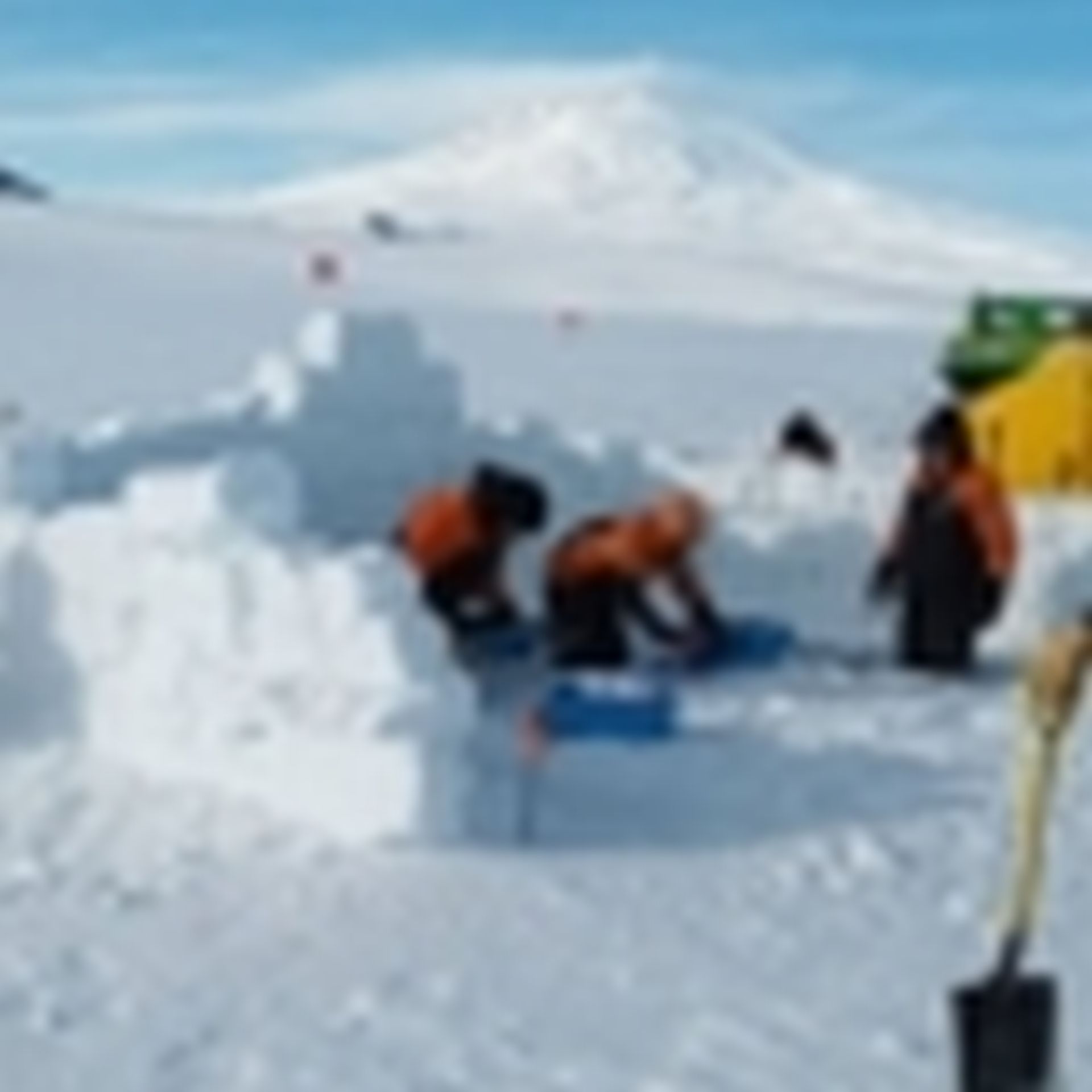Arrival to Shackleton’s Hut
Antarctic Heritage Trust Conservator, Belinda Hager talks about the team’s arrival to Shackleton’s Hut, Cape Royds on a mid-summer day
Our arrival at Cape Royds was dramatic; sweeping in by helicopter on a clear, sunny day, Mt Erebus on our right and the breathtaking Transantarctic mountains across McMurdo Sound to the left. The weather was almost perfect for a mid-summer’s day at the bottom of the world.
After setting up camp, our team of seven conservators and heritage specialists walked to the nearby coast, climbing over the black volcanic rocks above the Adelié penguin colony. Skuas reeled around, shrieking at us to leave them to their hunt.
Shackleton’s Nimrod hut, Cape Royds with Mount Erebus in the background. © Anthony Powell
We woke the next day to windy, cold conditions, all the better prepared to visit Shackleton’s hut and envisage the lives of the fifteen men who spent a winter there, preparing for a bid to walk to the South Pole, which ultimately failed.
The hut’s patina of age evokes a sepia-toned nostalgia. Cans of meat and fruit that could have been at home in my grandmother’s family kitchen, seen here as snapshots of home comfort for isolated men.
Their shared experience of living at close quarters, with little relief, is apparent in the names written on the walls, marking bed-spaces, and their tenacity is palpable in the science, printing and sewing enterprises seen around the hut.
Cape Royds is one of the most beautiful places I’ve ever been, yet it’s easy to understand its capacity to be brutal. To survive the winter there, Shackleton’s men were truly heroic.
Shackleton’s Hut, Cape Royds. © AHT/Belinda Hager





